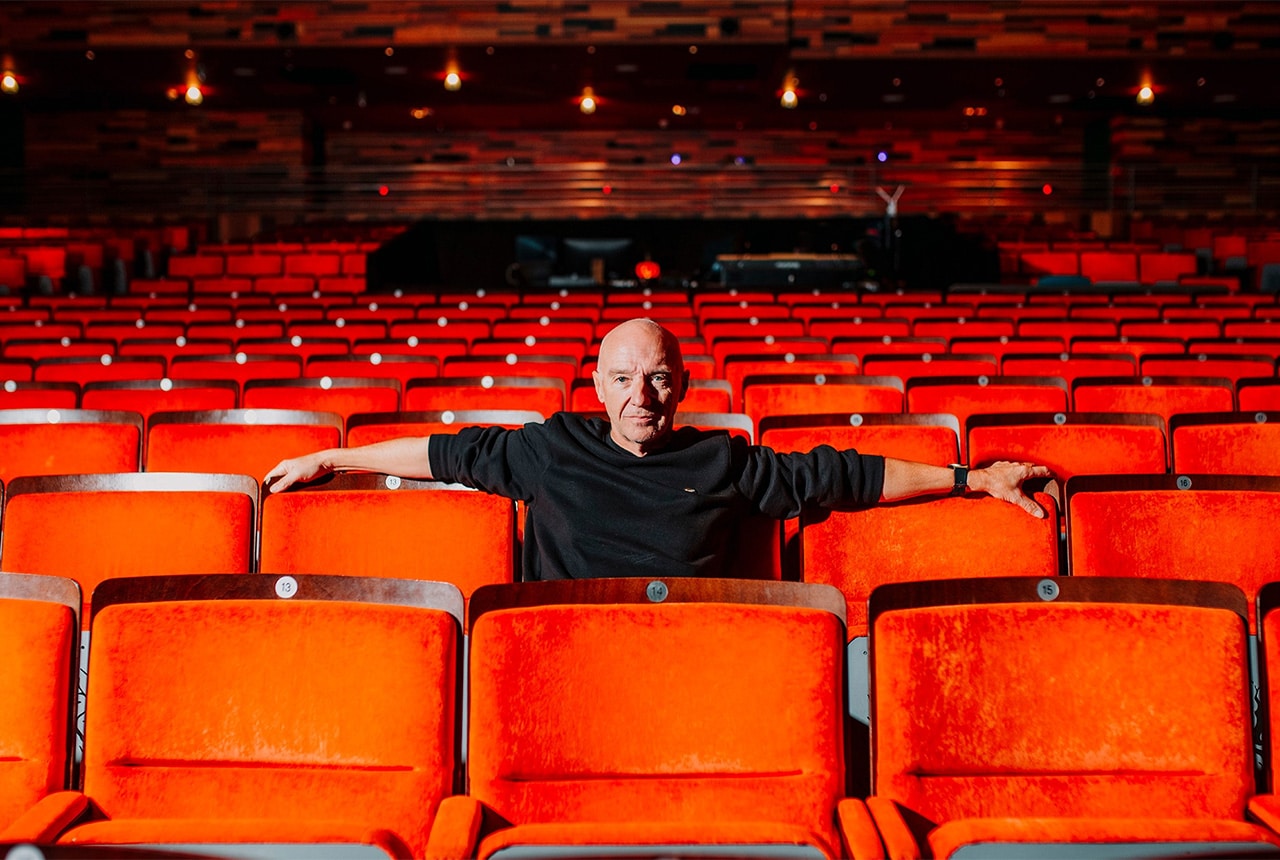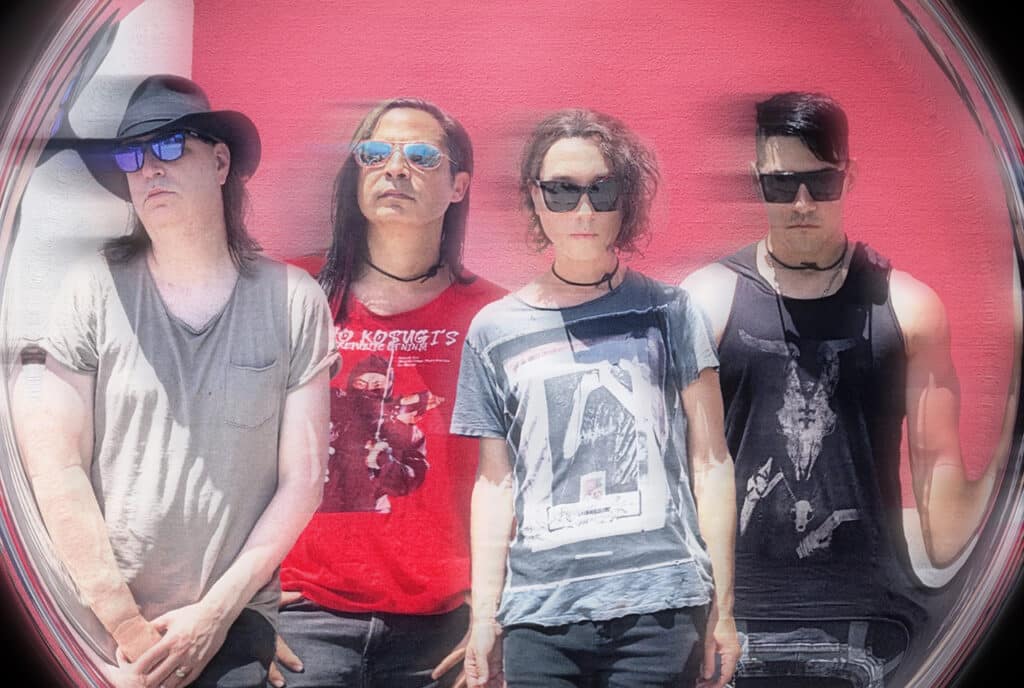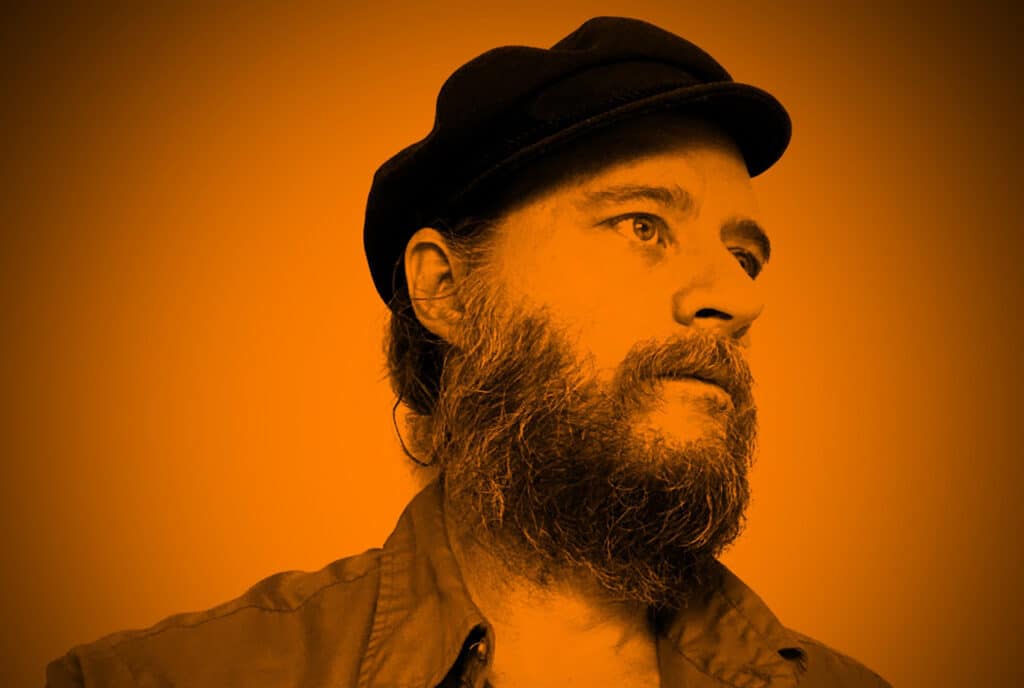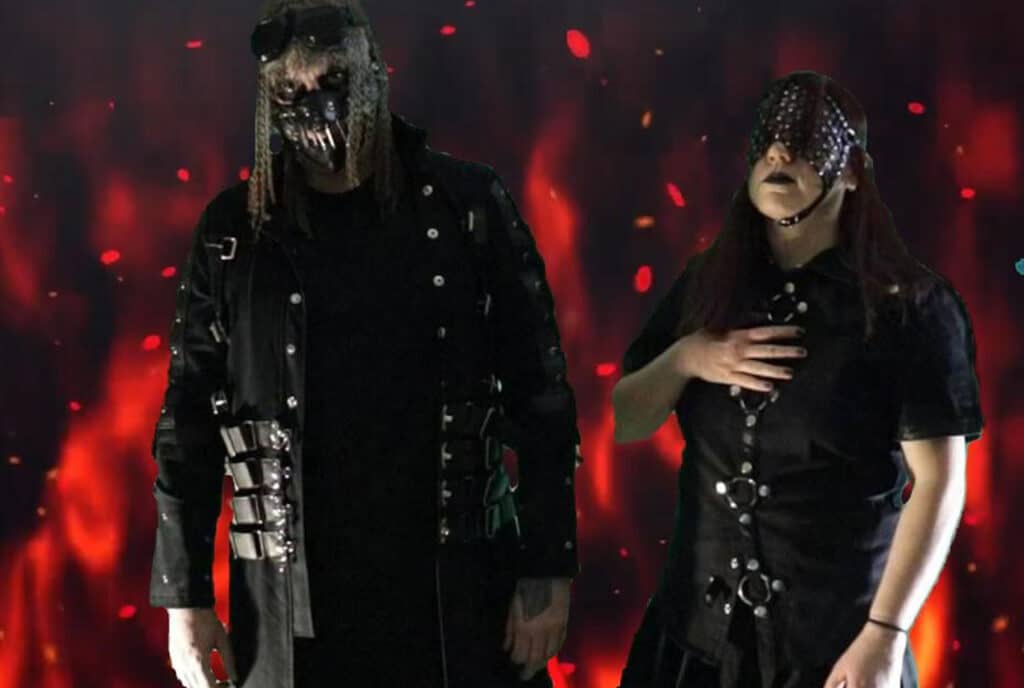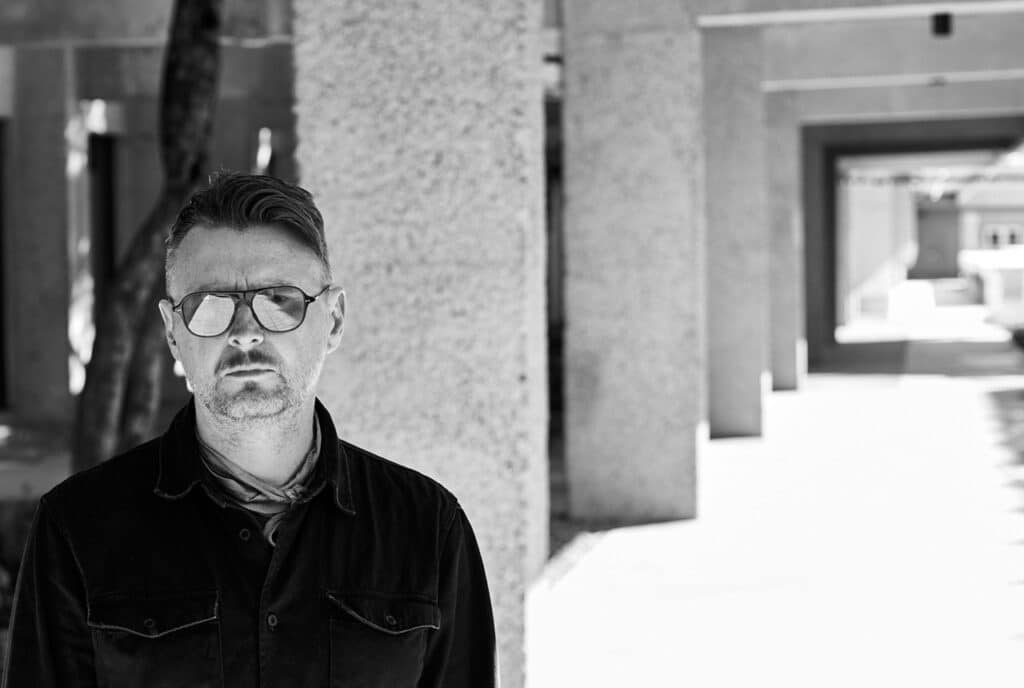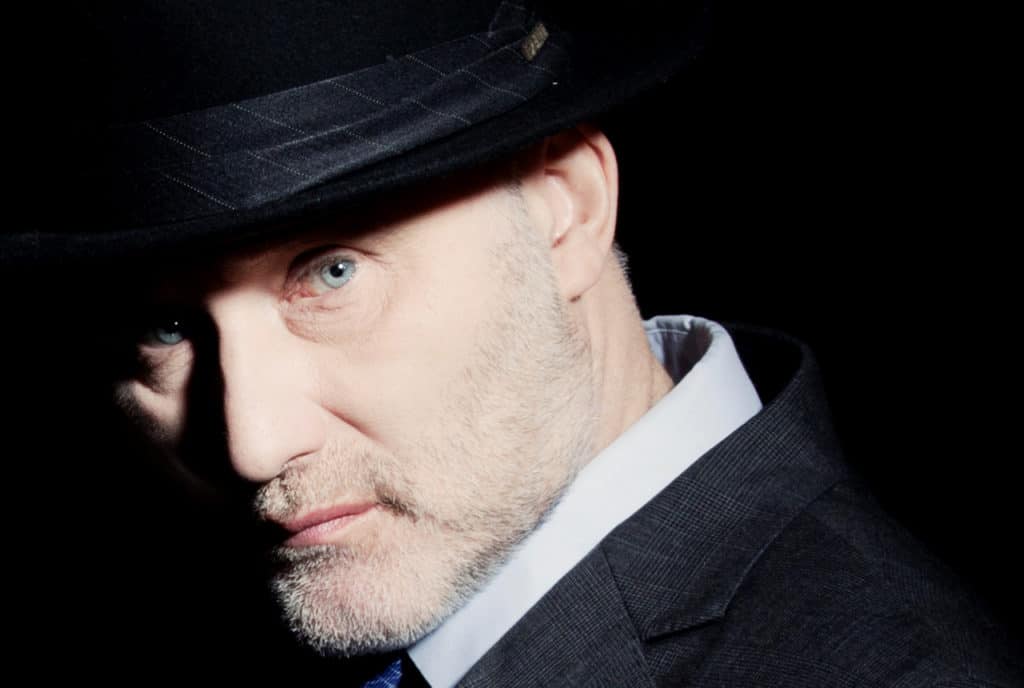When Midge Ure has toured America in recent years, it’s usually been completely solo. With just his guitar, he impressed audiences with re-workings of Ultravox classics like “Vienna” and “Reap the Wild Wind,” Visage’s “Fade to Grey,” and his solo material. But this summer, he’ll be embarking on a ‘Band in a Box’ tour with keyboardist Charlie Round-Turner that will allow him to present the music more closely to the original recordings. Over a Zoom interview, Ure discussed how this came about, as well as other topics.
When I interviewed you in the past, you seemed reluctant to incorporate electronics into your solo, non-band performances. What was the inspiration behind using this duo format?
Midge Ure: It came about a little over two years ago when Howard Jones asked me to come out on his US tour. He wanted to do a very electronic package, so came to me in my home in Bath, and he said, “look, I want to do this thing. Would you be up for doing it”? And I loved the idea because we had already toured together. I’d opened up for Howard back in 1986 or 87 or something around America, and it was great fun. But the reality is, at the time, Howard was much more commercially successful in America than I was. So with the fees that I would get for doing it, you couldn’t justify bringing a band with full-blown electronics and whatever, all the equipment that’s necessary and the crew and the transportation and all the stuff that’s involved.
And we finally came up with the concept. I was quite open about how I would do it, and I said, “well, if I could steal one of your keyboard players, the young keyboard player, Dan, and I’ll do a thing called a ‘band in a box’”, where I’m on stage with an electric guitar or a synth, and the keyboard player plays all the keyboard parts and I just program the drums and some synth basses and stuff. We’d basically do it like, I don’t know, the Pet Shop Boys with guitars. But that would enable me to perform songs that people would know, similar to how they might remember them. Some of the old Ultravox things or some of the old Visage things. And I was kind of reticent about doing it. It felt a bit like cheating, but I don’t think it is anymore.
I think it’s the people that are very accepting of how you perform live. So we did it on that tour, which was the “Dialogue” tour, and it was just fantastic. I mean, the response we got from the audience was brilliant. I wasn’t just standing with an acoustic guitar like I’ve done on the last few tours. This is as close as we’re going to get at this moment in time to a full band standing on stage. So, at the end of the tour, lots of people were asking if I would do it again, and this is the first opportunity I’ve had to come around and put a setup very similar to that together. That’s what I’m doing on this tour.
In terms of the arrangements, was it difficult at all to adapt it to a two-person setup? What was that process like?
Midge Ure: It is reasonably easy because you already have the template. What you’ve got to do is create the same kind of atmosphere that the original recordings have. If I’m going back to very early Ultravox recordings, back to 79 or 80 or whatever, the Vienna album, you want to capture the essence of it, not necessarily every nuance. You want to capture the drums and synth sounds that are similar, that setup that whole picture in people’s heads. So that takes quite a bit of groundwork; there’s a lot of prep stuff. I mean, the groundwork takes a lot longer than the tour actually lasts, but you want to get it right. Even though the drums and the synth bass or whatever most of the time will come from a computer, coming from a machine that you’ve got on stage sitting next to you, you still want to feel as though you’re performing when you’ve got your guitar on and you’re singing your heart out, you’re performing with a band. You have to make it sound as much like a band as you can, but without trying to replicate what a great bass player would do. So things that have proper bass guitars on, recorded with Mark King from Level 42 or Mick Karn from Japan, I just do a synthesized bass, a simplified version of something like that. But it still has the essence of what those original tracks felt like.
Over the years, I’ve seen quite a few electronic acts have some technical issues when they perform. Are there any particular things you do to ensure things are stable?
Midge Ure: Technology is a wonderful thing until it goes wrong and it goes wrong no matter how you’re using it. Computers are designed to sit in an office or sit in your laptop bag. They’re not designed to take the rigors of the road. The connectors are all very flimsy, and that’s the things that tend to go wrong. The one unforeseen thing that happened on the tour with Howard was we were doing an outside gig in Dallas and it was baking hot. I’ve got no idea what the temperature was, but it was relentless heat, and we got on and we played most of the first number, and then the computer overheated and it just refused to play another note. It just wouldn’t work. So I ended up borrowing an acoustic guitar and standing up and doing the set acoustically, which the audience was fine with. They were quite happy with that.
For me, that was the only technical issue we had. But the more technical stuff you have on stage, the more chance you’ve got something going wrong. And this time, even though I’m only bringing a keyboard player, I brought a tech guy with me just to eliminate any problems that’ll happen. You have to duplicate things. Have two computers on stage. You have to have another one standing by with the same software in it, and if something happens, swap them over just like breaking a string on a guitar. If you’ve got a spare computer there, you can probably switch it over in a minute or two minutes without really disrupting the evening.
Is a big part of it trying to keep the equipment easily transportable? Is that part of the process of planning this type of setup?
Midge Ure: Absolutely. The last time Ultravox performed as a four-piece band, excluding Live Aid, we had something like 24 or 25 keyboards on stage. That was pre-computers. Now you can have things called soft synths. So you have a software version of a Minimoog or a software version of a Yamaha CS-80 or whatever it happens to be. And they all live inside the computer. So you only need one or two keyboards on stage. And it’s something that I’ve developed over the last 20 years. You can split the keyboard in various sections across one keyboard and have on your left hand at the low end. You can have a cello or a bass playing, and then you can have a string section in the middle. Then you can have synthesizer, the lead sound, up here and all coming out of the computer at the same time but all individually, so they can be mixed and balanced.
So the technology has shrunk, and the ease of use has escalated because each one of these pieces of software takes weeks and weeks and weeks to get your head round to understand, to make it do what you want it to do. But as I say, I’ve been working with this stuff for years. In the UK, I do a thing called a ‘silent stage,’ where we have a drummer and a bass player and me on a guitar and a keyboard player or me on keyboards, or we’re all on keyboards. And if you turned the front of house sound down, you’d only hear me singing; you wouldn’t hear anything acoustically at all because now everything’s developed to the point where you can be just like a recording studio, just have a DI coming out of every instrument straight into the mixing desk out front, and you get this hi-fi sound. So it’s kind of like that. You have to simplify it. You have to understand the technology but still try to give it that cross between synthesized and human feel. As I said, playing a guitar along with a drum machine, which is basically what it is, you still have to inject some human element into it. And that’s what we’ve achieved so far.
Are there any songs that you didn’t do on that tour with Howard Jones that you’re excited about presenting live in this format now?
Midge Ure: Yeah, I’ve been doing quite a few. I’ve been thinking of songs that the majority of people who would come to the shows might know – “Dear God” and “Reap the Wild Wind.” So I’ve been programming those, and I think they will get a great response because the demographic of the audience is fairly general. They would’ve been at the inception of MTV, so they would’ve heard “Reap the Wild Wind” by Ultravox – that period of the start of MTV when they had the facility but they didn’t have the content whereas all the Brits didn’t have the facility, but we all made videos; we all made pop clips. So for the first six months to a year of MTV happening, it was UK bands dominating it. So I’ve been thinking about a lot of the songs there that would suit this format. And there are quite a few things: “Answers to Nothing” I’m thinking of doing as well, the title track of the solo album, maybe “Fragile,” the title track of that solo album – again, things that I maybe played in the past in America but sounding rather different from just standing with an acoustic guitar.
When you’ve toured solo, you could change the set night by night, moving things around and even doing requests. For this, will you have more material ready to go than you’ll perform on an individual night? Or will it have to be basically the same group of songs each time because of the prep work involved?
Midge Ure: Well, I think because, with Charlie, the keyboard player I’ve been working with for the last 25 years, between the two of us, we know an awful lot of songs. There’s a lot of things that are maybe slightly more obscure. So if someone came up in the afternoon and say, “Can you play this?” and then suggest something that we haven’t programmed, I haven’t done, we could probably, between Charlie on piano and me on vocals, maybe guitar, come out with a reasonable rendition of that song. So there is flexibility there, but the bones of it will be the choices I’ve made here prior to coming out because as I say, even the programmed stuff is all on individual channels; it all has to be balanced up. So each song has the flexibility of having the bass drum louder or the snare louder or the synthesized bass louder or whatever. And all of that stuff just takes a huge amount of time. So it would be nice to hear what it’s like, and again, I’m saying all this without actually having routined it. Once we get into rehearsals, that’s when you go, “That one really doesn’t work here in the studio,” or as I’m sitting playing along with it, it works fine, but you don’t really know if it works until you’re standing in front of an audience. I still have the flexibility to say, “Scrap that. Let’s do something with just a piano and voice instead.”
I’d like to go off-topic for a minute because you’d mentioned music videos. Ultravox was always known for their videos, and you also directed them for other artists. Could you talk about music videos a bit in terms of the climate in the industry at the time and how you came to direct for other people?
Midge Ure: When we started doing pop clips, started doing videos, we had to fight the record label. We had to fight Chrysalis Records and insist on having a video made, and within two years, they were insisting on in contracts that new artists made videos. It changed drastically in a very short space of time. So we were dominating. We made the “Vienna” video for 17,000 pounds. The record label didn’t know we were making it. We went off, we borrowed the money, we made the video. We were absolutely convinced that this was an amazing thing to do, to realize the imagery in your song and your music on screen. And of course, once they saw the video, they coughed up the money. They were desperate for it. But it was a very different time and once you get involved in that side of it because it’s the one side that most artists weren’t allowed to go into it.
It was like a secret, directing video. You know how to make music at the studio; you know how to work the studio; you know how to program your machines, all of that stuff. You understood all of that. But making film was a dark art. So you had to find a director. You had to find someone, a scriptwriter or someone, who would sit down and say, “I see Midge standing in a field of corn with a sun glazing behind it.” And then you realize they could easily just change that to “I see Taylor standing in a field of corn with it” because it had nothing to do with the music. So it was like the last bastion of us controlling what we did. So very, very quickly, we were creating the ideas for the videos but having someone else officially be the director. Then we eventually took over.
So we started burning out these ideas very, very quickly. Three minutes is one idea; one really strong idea is burnt out in three minutes. That’s like saying one really good idea for a script could make a two-hour movie, but you’ve got to compress it into these three minutes. We had all these ideas and not enough material to use it up on. So we started branching out, and we ended up doing videos for Philip Lynott, Fun Boy Three, Bananarama, quite a few other people around the same time as Godley & Creme. They were artists creating videos at the same time, so it seemed to be a thing to do. Then Kate Bush, of course, took over and started directing her videos because of the same reason. She found herself doing things and videos that you think, “Well, there’s no relevance to it. It doesn’t relate and connect to the music whatsoever.” So a lot of artists started doing it [themselves], and it was just something we found fun. But your little three-minute ideas burn out very, very, very quickly. So after the space of a couple of years, it became hard to come up with something new that felt relevant without driving a car through the American desert or a band playing on the edge of the ocean with their hair blowing – all the video cliches that came out. It was very difficult to come up with something new and fresh.
It’s been 10 years since Fragile came out. Do you have any plans to release new material anytime soon?
Midge Ure: Always working on new material. I’m just very slow. I realized I’m finding it more and more difficult to come up with something that I’m happy with, not something that’s just good enough. I can do stuff that I think is good enough as a follow up to Fragile, but that’s not good enough for me. I’ve got to make something where you feel that kick inside, that’s making me excited. But it just takes a long time. And of course, the longer it takes, the less enamored you become with what you’ve just created because it starts to become old and you start to pick holes in it. So it’s a kind of an never decreasing circle. It’s like a dog chasing its tail. But saying that, I’m kind of 80% through a new album that I’m happy with, but in the middle of all these things that I do … I’ve recently completed an entire instrumental album. It’s always been a passion of mine and it’s something that I wanted to do. I started working on it during lockdown, during covid lockdown. So I started looking out my window and seeing the view change all the time and just getting inspired by that and sat and made this entire thing. So that’ll be coming out soon, but it’s not quite a follow up to Fragile, but that’s in the oven. It is being baked as we speak.
Something I’ve been curious about is the track from Fragile “Become” and how Visage came to do a version of it. Had you initially been part of the Visage revival?
Midge Ure: Well, they shouldn’t have. That was the problem. Well, Rusty’s a friend. Rusty Egan and I have been friends for years, years and years. He sent me an email because at the time they were looking to do Visage, a new version of Visage – Rusty, Steve, and some other people. I had turned it down. I said I wasn’t interested in doing it, and Rusty was trying to figure out how to mix in software, new software on his computer. But he didn’t have anything to do trial mixes with. So I said to Rusty, “I’ve got this thing that I’ve almost finished. I will send you the tracks for you to play with.” And then next thing I know, he’s turned it inside out. He’s added bits to it, and he’s got Steve singing some lyrics on it – the lyrics I had, but I hadn’t finished the song. I hadn’t written the chorus yet. I hadn’t finished that. So we had a little friendly to-do about that, but it shouldn’t really have happened. I had loaned them the tracks for a specific reason, not for a release. But that’s Rusty for you.
So you’re still doing the Backstage Lockdown Club?
Midge Ure: I am. And I planned on stopping it straight after lockdown finished. But there seems to be an awful lot of people in various parts of the world who kind of depend on it. They keep talking me out of stopping it, and it’s not an easy thing to do because as soon as you start traveling again, you can’t just knock it up in a dressing room somewhere. You probably could. But the whole point of buying all these expensive cameras and tracking systems and audio/visual mixers and things was to make it look and sound as good as it could possibly be. And you can’t do that if you are doing it from a hotel room somewhere. You can’t lug all this equipment with you. So it becomes at times a task, but it’s never a bore. It’s one of those things you think, “Oh, God, I’m going to have to do one tonight. I’m going to have to do – What can I play? I dunno what I’m going to sing. I dunno what I’m going to play.” And then you get on it, and within five minutes, all of that’s gone, and you’re answering people’s questions, and they’re requesting songs, and you’re racking your brain trying to remember how the song starts. It keeps it available, and it keeps it incredibly real for them. Since the advent of the internet, this whole mystique of artists being untouchable, unattainable has completely gone. You’re now the friend, so they can talk to you; they can ask you questions; they can see you in your own environment and things. And that’s changed forever. And that’s probably a very good thing that it’s changed that way. So I think that the BLC, the Backstage Lockdown Club thing, keeps me connected in that sense, and it keeps my feet firmly on the ground.
How do you feel that your experience doing it, or what you take away from it, differs now that you are touring again? Now that there is no lockdown?
Midge Ure: I think there’s a newfound appreciation of what you do, what you’ve got, what I’ve got as a person. I have the ability to sit down here on a Friday or Saturday evening and sing, perform, talk to X amount of people around the world. When lockdown happened, like everybody else, I had an empty diary. I had nothing in the diary. Everything that was planned was gone, and I didn’t know if it’d ever come back. All of us, we all panicked, we all went into meltdown. Well, had six months of thinking, is that it? Am I just going to hear birdsong for the rest of my life? That’s it? There’s nothing happening. And then when it did come back, it was petrifying going back out to do it again, because you hadn’t done it for a year or a year and a half or whatever it was, and you thought, well, have I lost it? Am I capable of doing this still? And are people willing to listen to it? Do people still need this? So when it came back in all its glory, things have been so much better. And I think it’s an appreciation. I think there’s an appreciation from an audience perspective that, certainly at the age I’m getting to now, people want to see you now. They want to see you before it’s too late and they can’t see you. You’re not around. I mean, we’ve had a whole series of passings over the last couple of years of contemporaries and friends and musicians younger than me. So there’s an appreciation of that. And audiences who come to see me, the majority of the audience, would’ve loved what you did when they were young. And then they go off and they have the families. And the families are all growing up and they’ve now left home.
So, they’re of an age where they can get back out and rediscover their youth. They haven’t given up. They might have forgotten about it for a while, but they’re the ones who still go out and they’re the ones who buy tickets and they’re the ones who want to be there and see it, not just to relive their youth but to get that steering feeling sensation that only music can give you. And that happens on a live basis. I mean, last year I ended up doing the Royal Albert Hall, when maybe five years before that I couldn’t fill the Albert Hall. But I certainly could then, and that’s an amazing thing.
Tour Dates:
August 07 – Pawling, NY – Daryl’s House
August 08 – Hamden, CT – Space Ballroom
August 09 – Boston, MA – City Winery
August 10 – Roslyn, NY – Roslyn Hotel
August 11 – New York, NY – City Winery
August 13 – Annapolis, MD – Ram’s Head
August 14 – Philadelphia, PA – City Winery
August 15 – Pittsburgh, PA – Jergels
August 16 – Toronto, ON – El Mocambo
August 18 – Evanston, IL – Space
August 20 – Milwaukee, WI – Shank Hall
August 21 – Minneapolis, MN – Parkway
August 23 – Vancouver, BC – Rickshaw
August 24 – Everett, WA – King’s Hall
August 29 – Oakland, CA – Yoshi’s
August 30 – Los Angeles, CA – Zebulon
August 31 – San Diego, CA – Casbah
September 01 – San Juan Capistrano, CA – Coach House
September 02 – Phoenix, AZ – Musical Instrument Museum
September 04 – Dallas, TX – The Granada
September 05 – Austin, TX – 3Ten Live
September 08 – Atlanta, GA – The Earl
September 10 – St. Petersburg, FL – Bayboro Brewing
September 11 – Mt. Dora, FL – Mt. Dora Music Hall
September 13 – Ft. Lauderdale, FL – Culture Room
For more info, visit: http://www.midgeure.co.uk/
